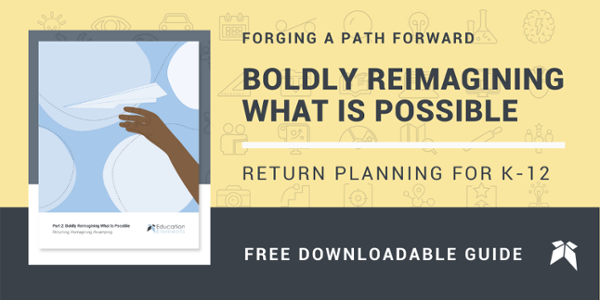
making new (school) year resolutions
how to leverage sprint plans and sepad to bring a sense of accomplishment to an ambiguous year ahead
working in a school has a way of making late august and september feel like the official start of the new year. while coffee cheers replace the clinking of champagne glasses, one thing stays the same: the desire to set (and hopefully keep) a new year’s resolution.
back when we traveled and dined in restaurants, i was eating lunch with a friend from work who shared her goal of saving $10,000 this year.
“that’s ambitious! how much have you saved so far?” i asked.
“none,” she replied.
this sparked me to think about my own goals: were they ambitious? did they excite me? and what was i actually doing to achieve them?
i’m a big believer in mantras, and i’ve never stuck to a new year’s resolution past february, so as we started 2020, i centered myself on growth + grace. for me, this encompasses several things — granting grace to myself, showing grace to others, and making time to reflect on the ways i make others feel. there are lots of ways i hope to grow in 2020, from increasing my financial stability and building up my fitness habits, to buying our first home, growing professionally, and starting a family. as you approach a new school year, what mantra might guide your work?
to put my mantra in action, i decided to take a method from 瑞士vs喀麦隆亚盘赔率 and approach this mantra with sprint plans. sprint plans are shorter spurts focused on a specific goal. they help districts (or goal-setters) learn from mistakes quickly, pivot, and adjust based on data. they also ideally help you get a quick win in a targeted area, so you can refocus energy on the next sprint ahead. i decided to approach the big personal goals of my mantra with 3-month sprints: save money, buy a home, run another half marathon, and hopefully start a family.
like we encourage districts to do, i started sprint 1 by setting a purpose: this first sprint of financial stability is a precursor for all the other goals i have this year. without it, i won’t be able to reach the other things i hope to achieve. my spark may have been an off-handed comment from a colleague, but i made time to reflect on my personal why for this goal. next, i needed to expand my knowledge; where was my money currently going? i gave myself a full month to track every purchase, without judgment (having grace for myself when my spreadsheet looked sad). as you consider your goals for the 2020 school year, how might you chunk them into purposeful sprints? what opportunities are you making for yourself, your team, or your students to connect a spark to the goal, and how might you gather the data you need to set reasonable benchmarks for your goal?
learn more about the sepad method here.
in thinking about this upcoming academic year, the need for connection and engagement feels stronger than ever. personalized learning is one way to help teachers and students develop strong relationships and ties to the content. you might use a journey map or empathy exercise to spark a reason to focus in on engagement. then give yourself some grace and gather data to guide your work: how many students engage in virtual learning regularly, or how many opportunities in an asynchronous lesson do students have to collaborate and connect? pick a couple of focus questions and dig into the details.
as january passed, i started noticing trends in my spending. i began to practice better financial habits by limiting my budget in a few key areas (ahem, postmates), and gradually, the amount i was able to save each month increased. when our world changed dramatically in march, having something to control and track made the tiny type a part of my heart happy, and staying on top of this goal became second nature, something i didn’t need to think about to apply.
this school year will bring about many changes, some that we can anticipate and many unknown unknowns that we can’t yet foresee. my personal goals this year also ran into shifts i didn’t see coming. buying a home in a pandemic has proven to be trickier than i imagined when i planned this year out back in january, and our family is starting sooner than we thought (goodbye half marathon goal, hello preparing for parenthood!) i rearranged my sprints to adjust to our new reality, continuing to think through the spark for each, expanding my knowledge before jumping in, and giving myself time to practice.
by setting a mantra to guide you, chunking your work into smaller sprints, and following the sepad method as you approach your short-term goals, you can navigate the unknown and focus on accomplishing the things that matter most to you and your students this academic year. i’d love to follow your journey — tweet me your mantra at @court_flanders.
about courtney flanders
courtney flanders is an associate partner, working with districts and their school teams to implement meaningful changes in sustainable ways. she taught high school english in both traditional and projects-based-learning classrooms before moving into school leadership where she co-founded a personalized learning high school. she earned a b.a. in magazine journalism and political science from syracuse university and an m.ed in urban leadership from southern methodist university. courtney is a native new yorker and currently lives in texas with her husband, son, and their two dogs.



